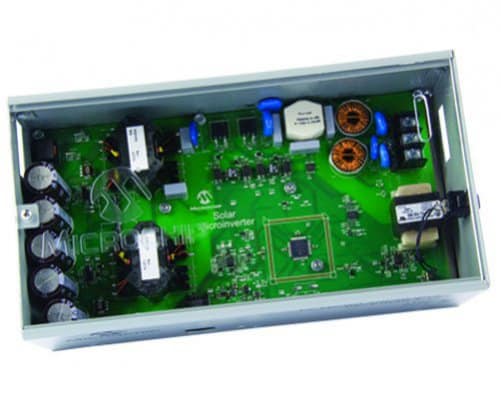Microchip has introduced a solar microinverter design that optimises panel performance, enhances grid integration, boosts efficiency, and reduces costs.

Grid-connected solar microinverters are essential components in modern solar energy systems because they can convert the direct current (DC) produced by individual solar panels into alternating current (AC) suitable for the grid and household appliances. Their inherent design offers optimised performance for each panel, ensuring that issues in one panel, such as shading, don’t degrade the efficiency of the entire array. This independent operation also provides flexibility in system design, enhanced safety by reducing high-voltage DC in the system, and superior monitoring capabilities. Microchip has launched a reference design for a grid-connected solar microinverter to simplify the design process. The reference design showcases the versatility and robustness of Switch Mode Power Supply (SMPS) Digital Signal Processor and Controller Integrated Circuit (dsPIC) Digital Signal Controllers in grid-integrated solar microinverter systems.
The design boasts a peak output capacity of 215 Watts and provides optimal power point tracking for PV panel voltages ranging from 20V to 45V DC. The design achieves high efficiency by introducing an innovative interleaved active-clamp flyback topology combined with Zero Voltage Switching (ZVS). The entire design is powered by a singular dsPIC33F “General Series” (GS) digital-power Digital Signal Controller (DSC), orchestrating both the power conversion and overarching system management. The design illustrates how the DCS allows developers to seamlessly and economically craft products incorporating advanced switch methods/topologies, minimising switching losses and boosting system efficiency. The solar microinverter reference design is royalty-free when used in line with the licence agreement.
The system exhibits an impressive efficiency of 94.5% under nominal conditions, specifically for 230Vac systems. It features a remarkable maximum power point tracking capability of 99.5%. The entire system operates under complete digital control. During periods of low output power, it works in burst mode, and there’s an output power de-rating when the photovoltaic (PV) panel voltages drop. Additionally, the system is fortified with safeguards against various current and voltage discrepancies. A notable feature is its system islanding, which is adept at detecting grid failures.
Several solar modules, linked in series and parallel configurations, generate an output ranging from 200 to 400 volts and a current between 10 to 50 Amps. These panel combinations feed into a single central inverter, producing 120/240 VAC at intermediate power outputs of 2 to 10KW. The system integrates directly with the AC power grid, so it’s referred to as a Grid-Tied system. Customers supply power to the grid during daylight hours, whereas at nighttime, they draw power from it. One of the primary benefits of the Grid-Tied system is the avoidance of costly and short-lived batteries. However, a potential downside is that the inverter can be a single point of failure. Additionally, the system might not achieve optimal energy extraction from the solar panels, particularly when there’s partial shading.
Microchip has tested this reference design. It comes with a Bill of Materials (BOM), schematics, etc. You can find additional data about the reference design on the company’s website. To read more about this reference design, click here.







